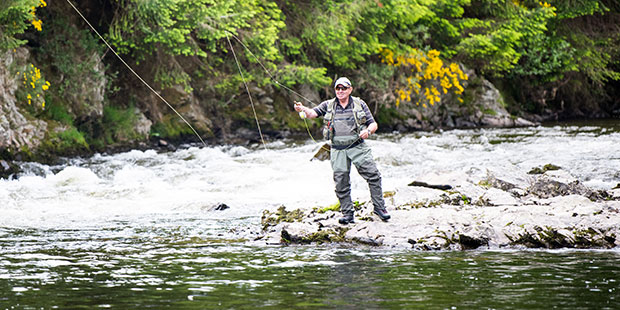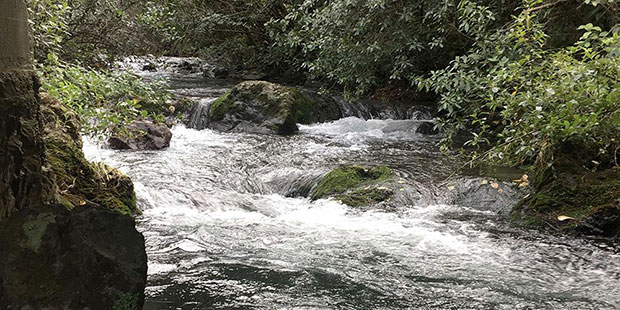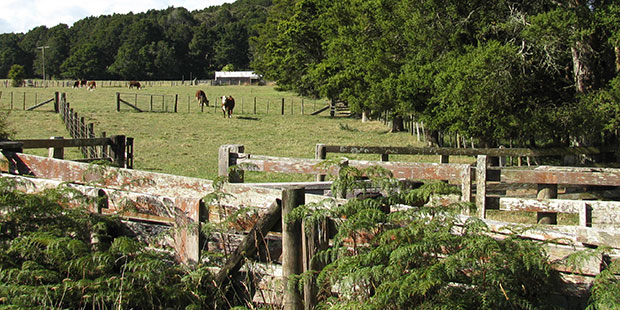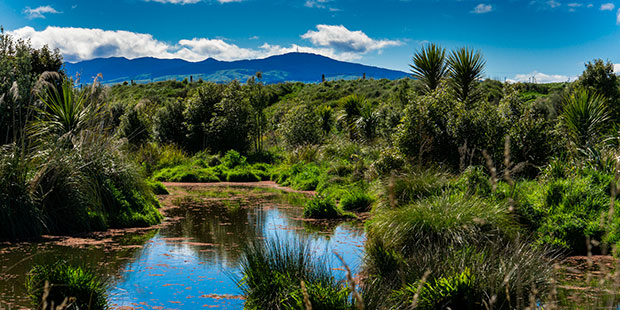Tōtara could be part of the water quality answer
Dairy project seeks riparian buffers that pay farmers - not costs them.


Tōtara oil and milk might seem strange companions – but a project currently under way could one day see both become products emanating from dairy farms.
The pairing is just one option that could stem from a project looking at productive riparian buffers – native and/or exotic planting that can not only promote better water quality in New Zealand waterways but also create new income streams for farmers.

Image / Supplied.
Image / Supplied.
“We know riparian planting benefits the environment by reducing nutrient losses into farm waterways,” says Electra Kalaugher, senior land and water management specialist at DairyNZ. “However, riparian planting can often mean a loss of productive land for farmers.
“Productive riparian buffers are different – and the project is exploring new and existing plant product options and their ability to deliver environmental, social, cultural and financial benefits.”
The project, funded by the Ministry of Primary Industries Sustainable Farming Fund, involves farmers from two North Island catchment stakeholder groups, Waitangi and Waihou-Piako. Now in its second year, the project is encompassing the possibility of new products like tōtara essential oil among a wide range of options, including ideas for herbaceous feed and silage crops, fuel and bio-energy, tree fodder, timber, fibre (like, flax), honey production, fruits and nuts and medicinal products.

Image / Supplied.
Image / Supplied.
Tōtara essential oil is extracted from tōtara foliage and is in its infancy as a marketable product. Much research has yet to be done on its various uses, which may include potential use as a blending partner and carrier oil for perfume, cosmetics, and other lifestyle products. It may also have pharmaceutical applications.
It has unusual and potentially beneficial components – including a high concentration of Beta-caryophyllene, thought to have a variety of health benefits but present in high concentrations in only a handful of plants.
A Northland working group has also been studying the desirability of a tōtara forest industry in Northland, including the possible production of tōtara essential oil. A recent report in the newsletter of the working group said: “More research is needed to properly evaluate the potential pharmaceutical and therapeutic properties of tōtara essential oil - however, this initial finding certainly indicates further investigation is warranted. “

Image / Supplied.
Image / Supplied.
In the project trial, foliage from tōtara of various ages was harvested. While essential oil extraction can be recovered from various growth stages, it was found to be most efficiently done from tōtara saplings as part of a pruning operation.
One of those engaged in the trial, Stephen Heubeck of NIWA, says: “Totara can yield something useful at every step of tree care – the foliage from pruning and thinning young trees can yield essential oil, later more mature trees will yield high value timber and woody by-products could be locally used for bioenergy – all while protecting and providing shade for the riparian zone, recycling nutrients and improving habitat for native species.”
Kalaugher says that while tōtara oil’s efficacy as a product is not totally proven, it is only one potential income stream to come from the native tree: “Tōtara is great because it grows like a weed and we are starting to see ways that different parts of the tree can be used productively.”

Image / Supplied.
Image / Supplied.
Tōtara timber grew to fame as a tree mostly used for waka and carvings and for buildings, furniture, joinery, fence posts and railway sleepers. The tree needs to be at least 50 years old before the timber can be harvested, however a continuous cover forestry system would permit the harvesting of much older trees (which have more heartwood) and create gaps for regeneration of new young trees, and suppressed trees waiting to grow into the gaps.
One existing high value product from tōtara is totarol – a natural antibacterial and antioxidant chemically extracted from tōtara heartwood, used in a number of products, including skin creams and night creams, anti-acne products, toothpaste, mouthwash, wound healing cream, disinfectants, sunscreen lotion, shampoo, conditioner and soaps.
Totarol is one of the tōtara tree’s natural agents that protects the wood against microbial attack and rot. However, substantial quantities of Totarol only accumulate in the heartwood after 150-200 years (according to the Herb Foundation of New Zealand), which is why production regimes with very long-time horizons and multiple benefits are particularly interesting for the Totara tree.

Taratahi. Photo by Michael Bergin.
Taratahi. Photo by Michael Bergin.
“It’s not just about tōtara, of course,” says Kalaugher. “That’s just one of the options being explored. There will be no silver bullet or one-size-fits-all answers. There will be different solutions in different parts of New Zealand and according to different farm circumstances and soil types – and we’re looking at other options like poplars and willows for fodder, for example.”
The project is also exploring the potential of other native species in productive riparian buffers – for example, rewarewa for honey, harakeke for weaving, manuka for oil and even mahoe and pittosporum as potential fodder.






